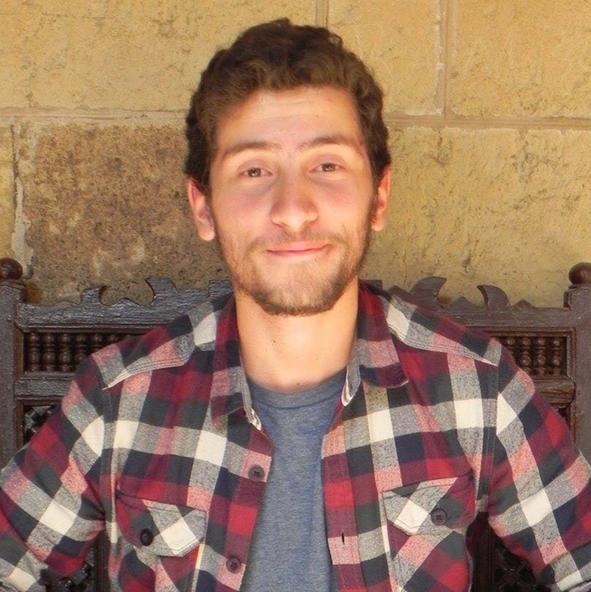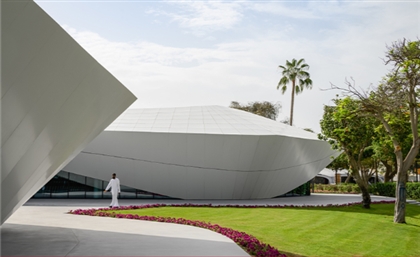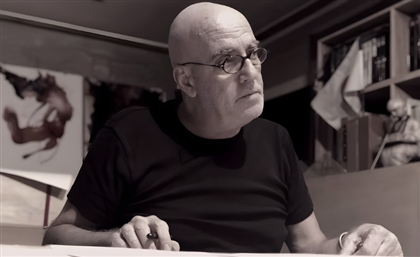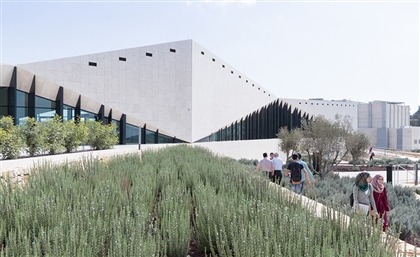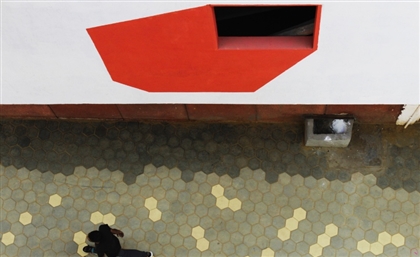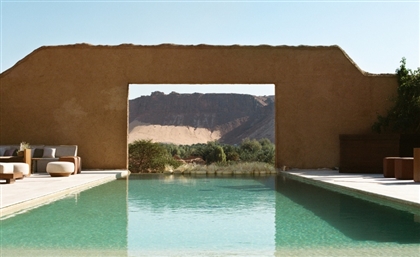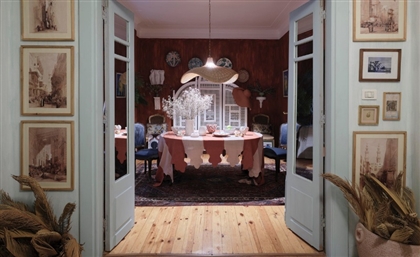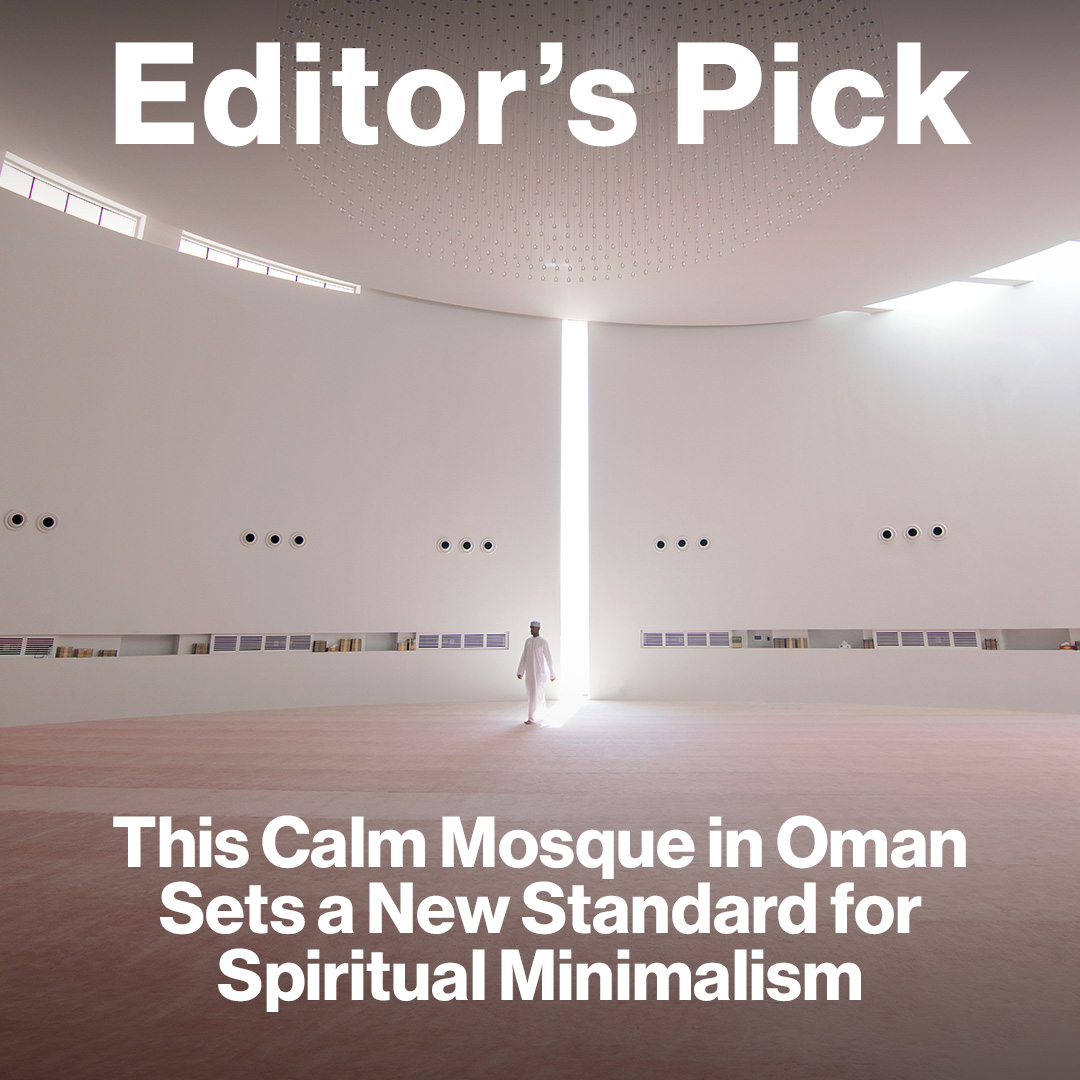Nelly El Sharkawy’s Photography is a Carnival of Cairene Facades
Architect and photographer Nelly El Sharkawy flickered through Cairo’s facades to produce abstract visions of architectural realities that don’t really exist, but in a way, really, they do.
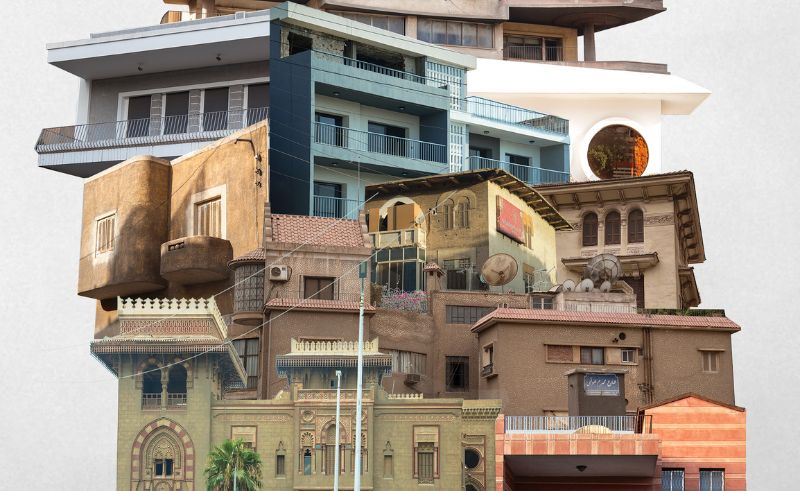
Offering alternative visions of iconic and nuanced Cairene facades wasn’t a feat Nelly El Sharkawy, a conceptual street and architectural photographer, embarked on to wave an abstract banner. In other words, she didn’t create abstract depictions of Cairo’s buildings for the sake of abstracting them. Rather, it was her form of self-discovery - the end of a journey to find architecture she related to. When none were found, El Sharkawy created her own, showcasing in the process how neighbouring buildings in Cairo have different facades that tell stories of history, culture, and society in layers.
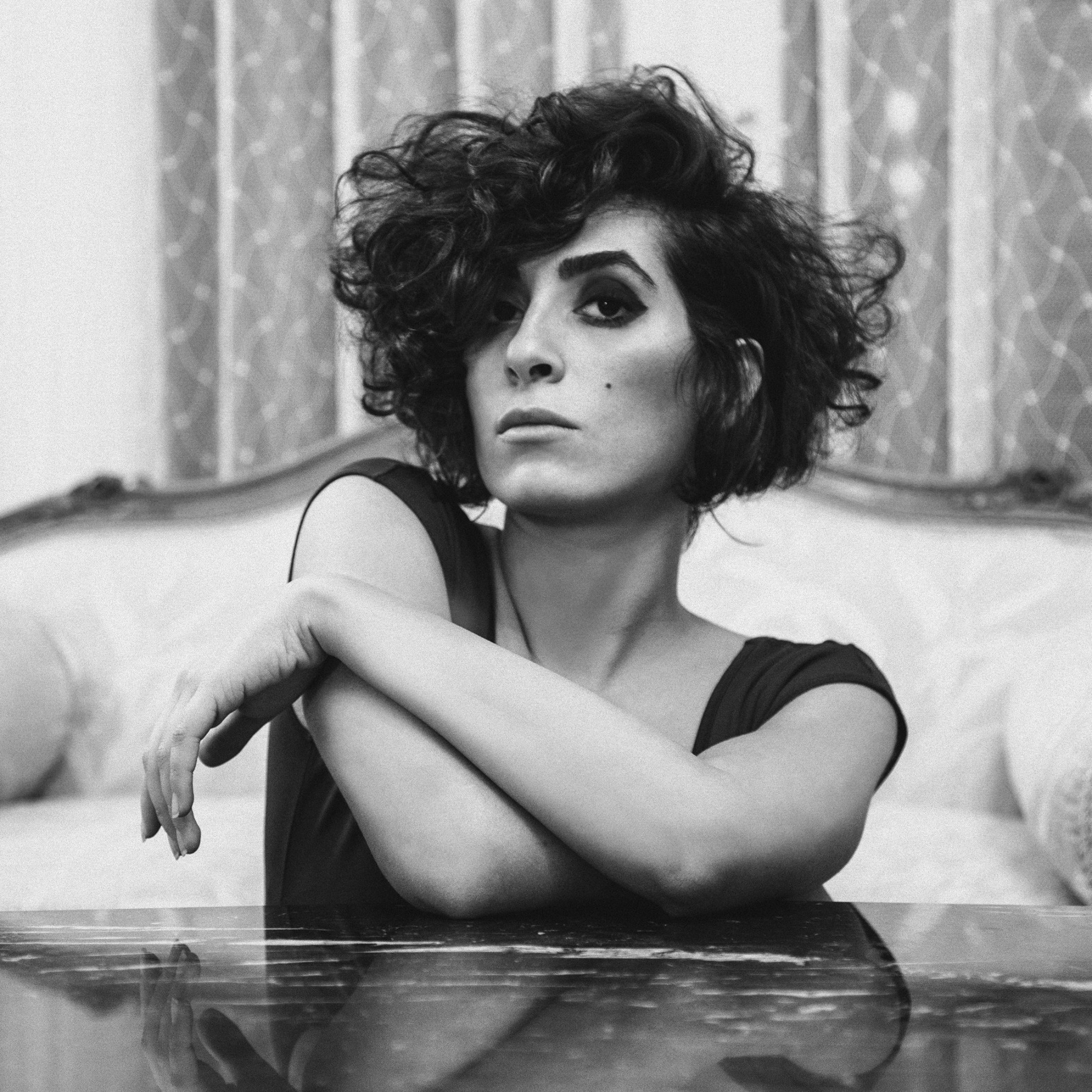 El Sharkawy’s relationship with photography began in 2009 by taking self-portraits at home during high school, before she took to street photography around the time when she started studying architecture. “My household was artistic, and photography was a reflection of the environment I was brought up in,” El Sharkawy tells #SceneHome. Surrounded by art from a young age and constantly having a camera around the house, inspiration came early to El Sharkawy with her mother being a cinematographer and her father an architect and photographer. That said, this photographer took a different route with her practice.
El Sharkawy’s relationship with photography began in 2009 by taking self-portraits at home during high school, before she took to street photography around the time when she started studying architecture. “My household was artistic, and photography was a reflection of the environment I was brought up in,” El Sharkawy tells #SceneHome. Surrounded by art from a young age and constantly having a camera around the house, inspiration came early to El Sharkawy with her mother being a cinematographer and her father an architect and photographer. That said, this photographer took a different route with her practice.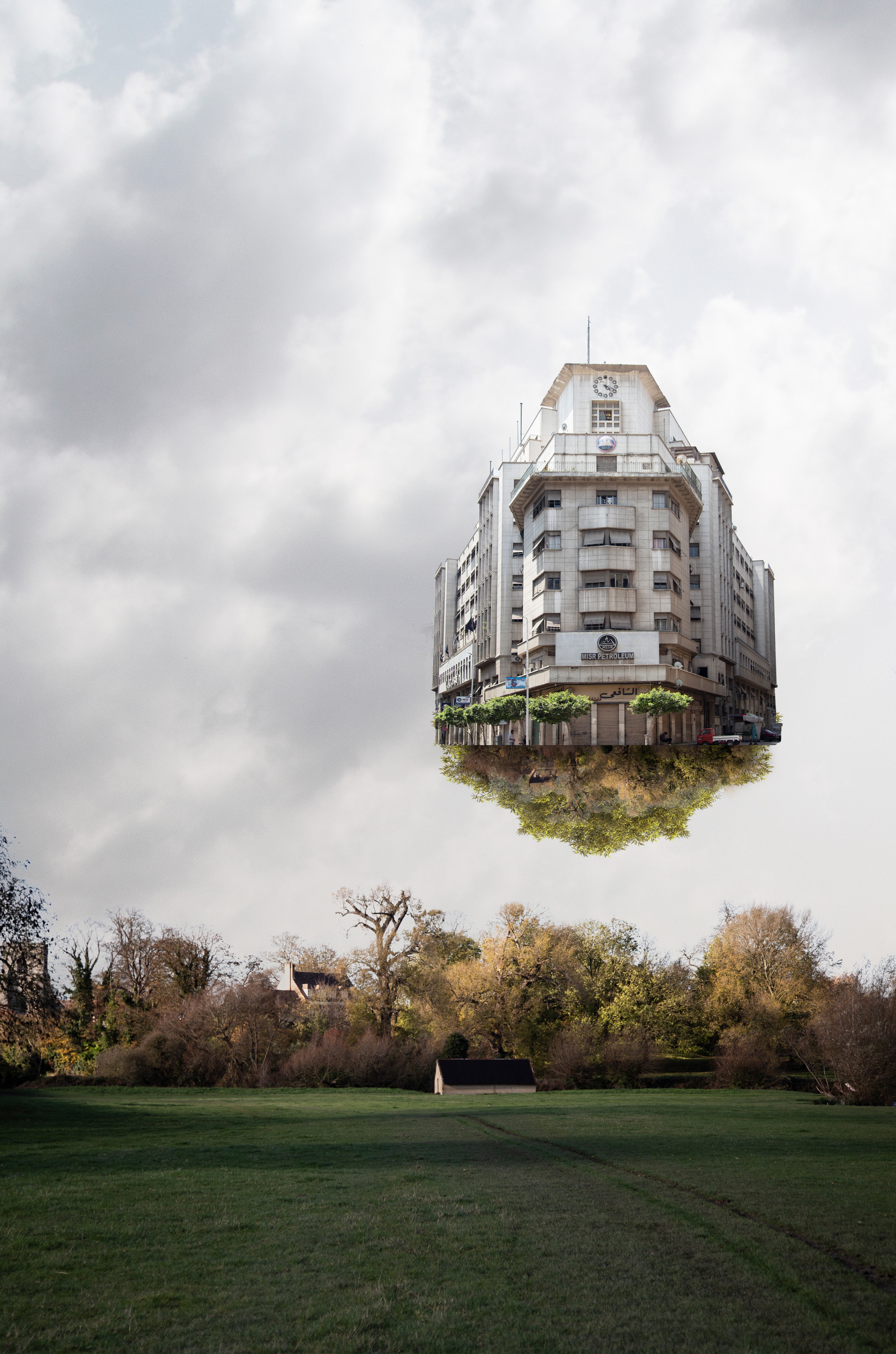 “I tried to find a form of architecture I was comfortable with but it all felt the same and I couldn’t find something that represented me,” El Sharkawy explains. Photography to El Sharkawy was a way of understanding her favoured style of architecture. Which in reality, didn’t exist. It turned out to be a style she carried deep in her mind. Architecture influenced El Sharkawy’s photography, and vice versa.
“I tried to find a form of architecture I was comfortable with but it all felt the same and I couldn’t find something that represented me,” El Sharkawy explains. Photography to El Sharkawy was a way of understanding her favoured style of architecture. Which in reality, didn’t exist. It turned out to be a style she carried deep in her mind. Architecture influenced El Sharkawy’s photography, and vice versa.
“I would photograph buildings regardless of whether I liked them or not, as long as I found an interesting element in them,” El Sharkawy continues. “This helped me understand my preferences, with the amount of footage I was compiling I noticed myself becoming more narrowed down to a certain style.”
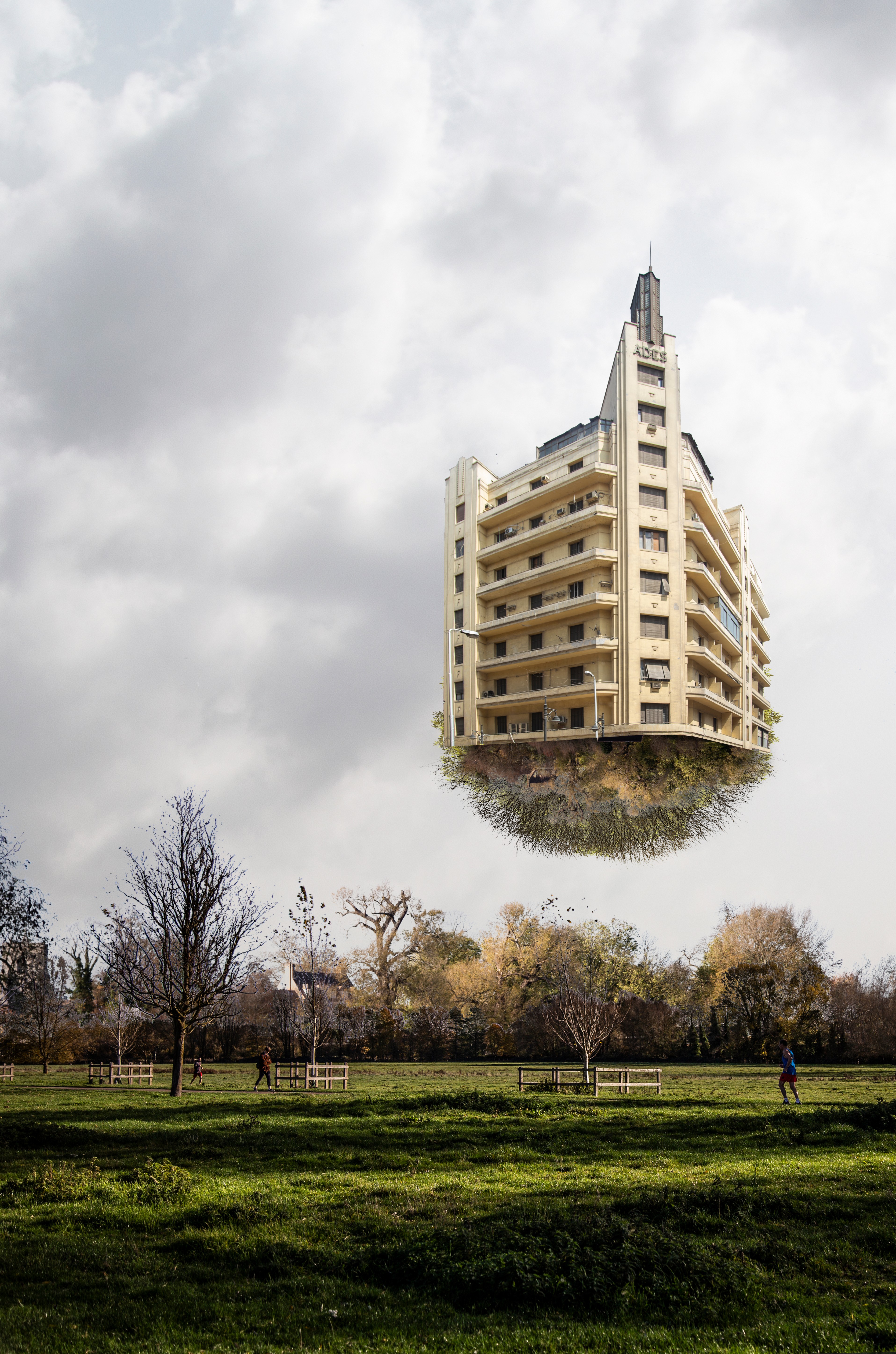 “I wouldn’t really be able to define my work because it shifts all the time, but at the moment I’m enjoying photographing things that aren’t there.” No, El Sharkawy isn’t referring to ghosts or properly paved sidewalks in Cairo but rather to manipulating architectural photographs after taking them. “Maybe I had a different perspective and did some editing, but at the end of the day, I just felt like I was doing the same thing, and I wanted to surprise myself before surprising others.”
“I wouldn’t really be able to define my work because it shifts all the time, but at the moment I’m enjoying photographing things that aren’t there.” No, El Sharkawy isn’t referring to ghosts or properly paved sidewalks in Cairo but rather to manipulating architectural photographs after taking them. “Maybe I had a different perspective and did some editing, but at the end of the day, I just felt like I was doing the same thing, and I wanted to surprise myself before surprising others.”
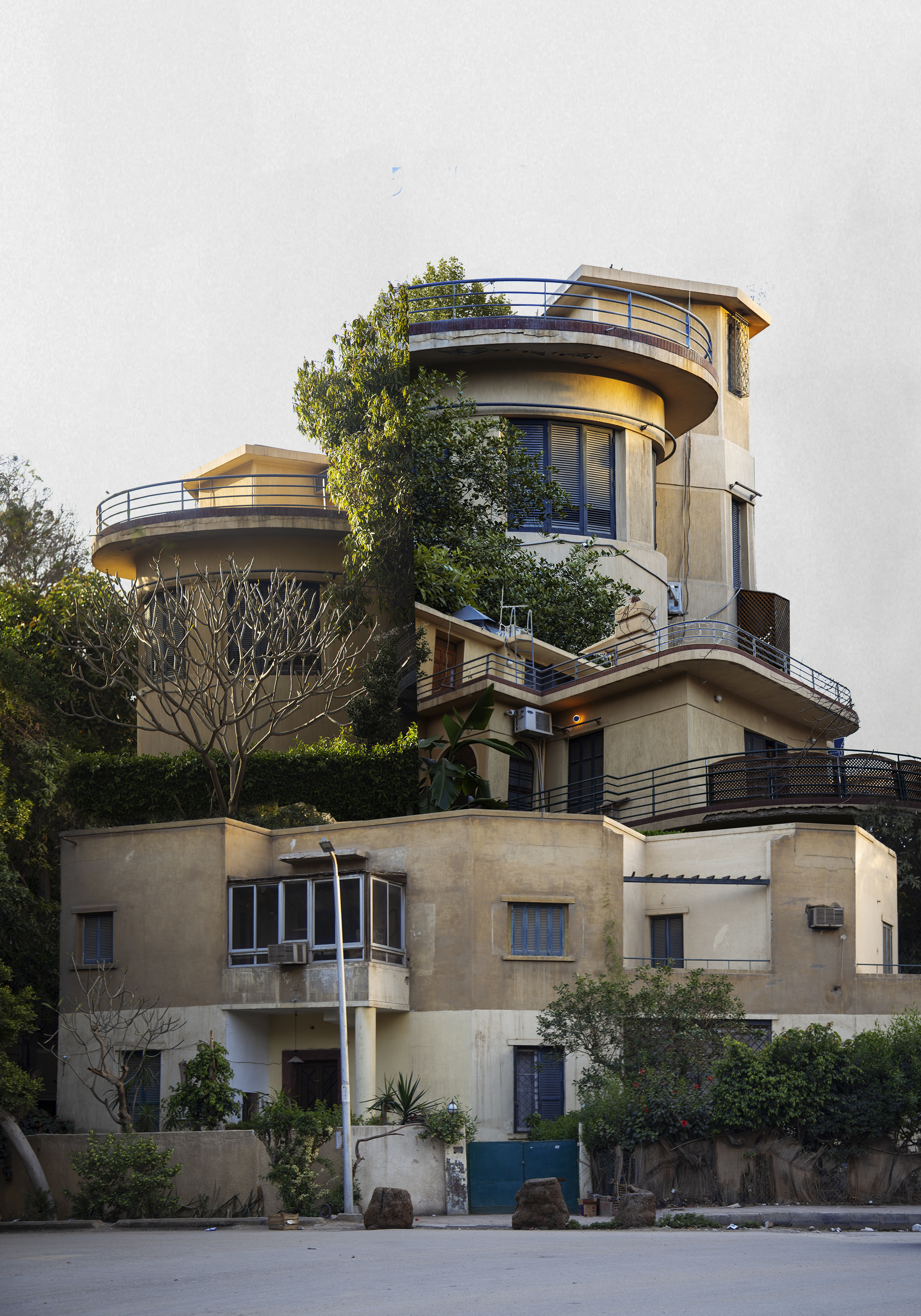 Seeing plenty and collecting a lot of footage, El Sharkawy had many thoughts on architectural design despite never working the profession, which she unleashed through her images. ‘What if?’ scenarios starting juggling about in her imagination. What if an iconic building was put in a different context? Like downtown Cairo’s Hilton Ramses Hotel blended into the cityscape of Nice, France.
Seeing plenty and collecting a lot of footage, El Sharkawy had many thoughts on architectural design despite never working the profession, which she unleashed through her images. ‘What if?’ scenarios starting juggling about in her imagination. What if an iconic building was put in a different context? Like downtown Cairo’s Hilton Ramses Hotel blended into the cityscape of Nice, France.
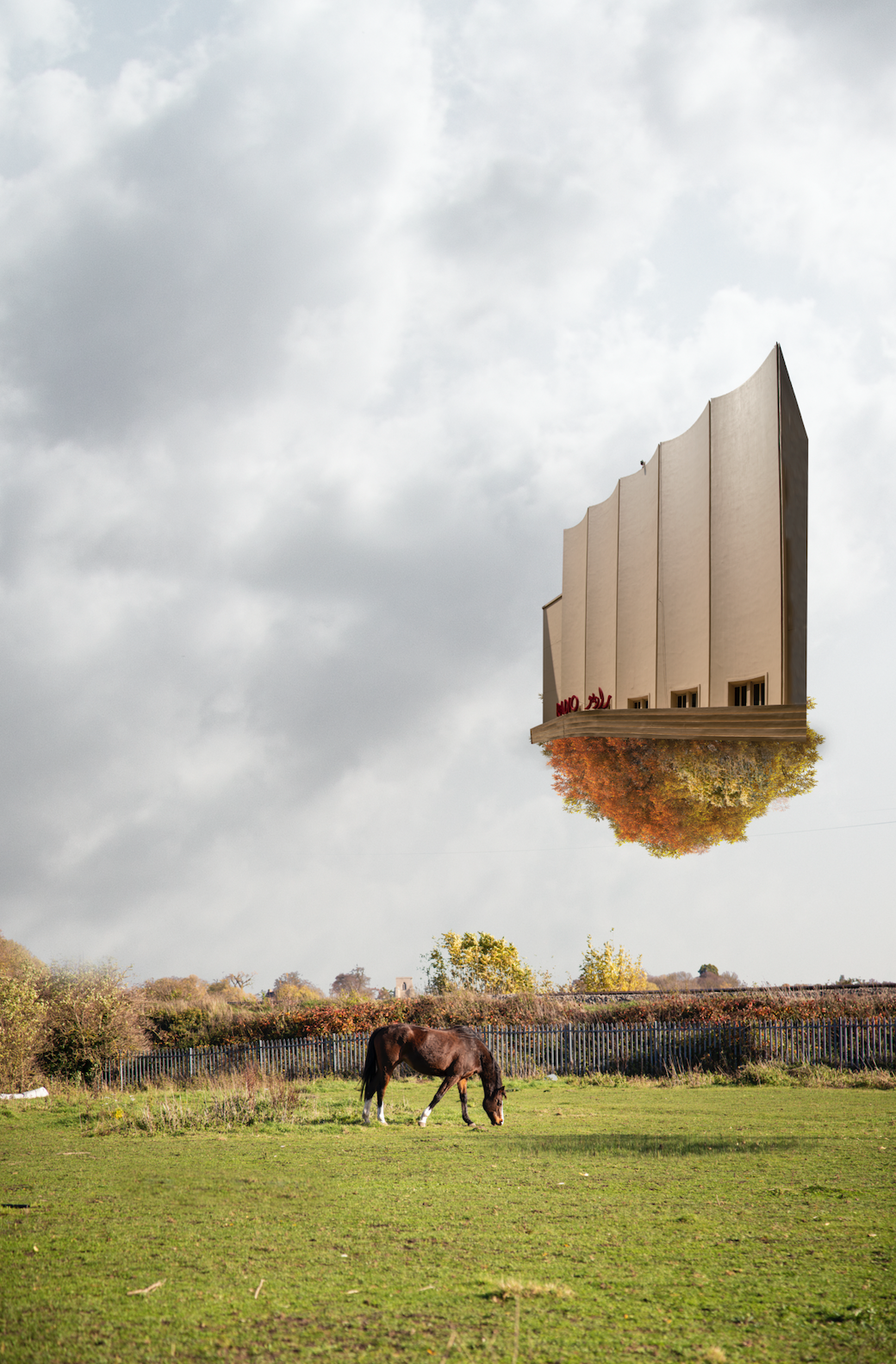 What if another building had, like, 700 other buildings morphed into a surreal composition that may not be possible to construct but at least offers a window into a different reality that is thought provoking and makes the viewer wonder. Like placing downtown Cairo’s Risotto Club along with other neighbouring and iconic buildings in layers above the Nile Ritz Carlton Hotel. Constructing scenes that have never been viewed before, despite their intrinsic familiarity.
What if another building had, like, 700 other buildings morphed into a surreal composition that may not be possible to construct but at least offers a window into a different reality that is thought provoking and makes the viewer wonder. Like placing downtown Cairo’s Risotto Club along with other neighbouring and iconic buildings in layers above the Nile Ritz Carlton Hotel. Constructing scenes that have never been viewed before, despite their intrinsic familiarity.
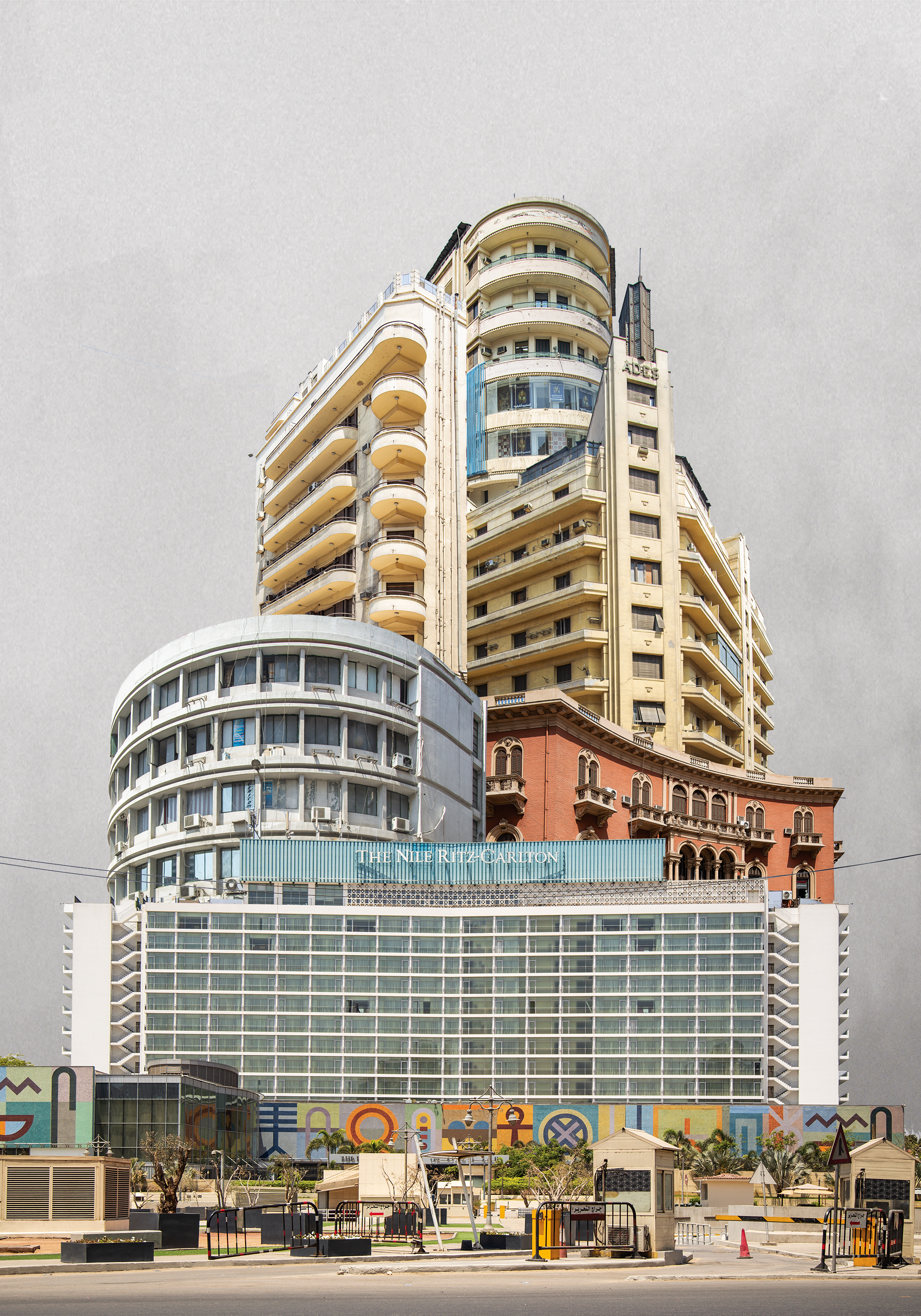 Le Carnaval is a series that started in 2017 and was El Sharkawy’s way of viewing architectural styles in a non-academic way; in a way she could relate to and so do we, and probably you. “I would go to a specific neighbourhood and photograph all the buildings in it.” Whether it's residential, commercial, or whatever, really, even kiosks, El Sharkawy left no stone, well, unphotographed. Scanning the entire area and capturing scenes featuring unique elements that catch the eye, and it could be just a window. El Sharkawy would then create different prototypes for a specific area – say Heliopolis – with as many details as the composition would hold while making sense.
Le Carnaval is a series that started in 2017 and was El Sharkawy’s way of viewing architectural styles in a non-academic way; in a way she could relate to and so do we, and probably you. “I would go to a specific neighbourhood and photograph all the buildings in it.” Whether it's residential, commercial, or whatever, really, even kiosks, El Sharkawy left no stone, well, unphotographed. Scanning the entire area and capturing scenes featuring unique elements that catch the eye, and it could be just a window. El Sharkawy would then create different prototypes for a specific area – say Heliopolis – with as many details as the composition would hold while making sense.
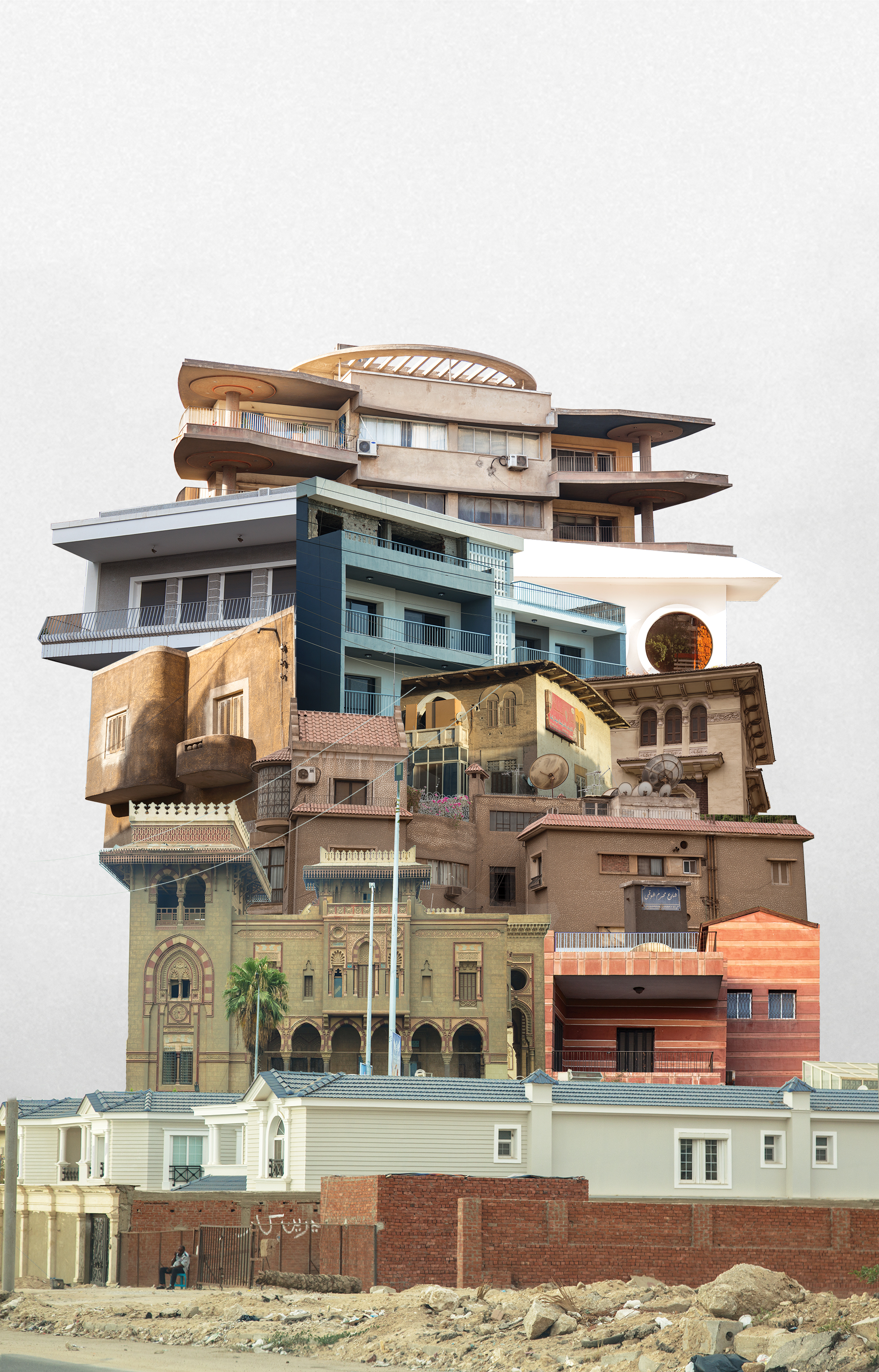 On her journey of self-discovery, El Sharkawy showcased how the neighbourhoods of Cairo would have adjacent buildings that are completely different from each other. Facades telling different stories about history, culture and society. “You could be in Zamalek, standing in front of a palace and right next to it would be a kiosk on the corner of a 13 storey building. All in one neighbourhood.”
On her journey of self-discovery, El Sharkawy showcased how the neighbourhoods of Cairo would have adjacent buildings that are completely different from each other. Facades telling different stories about history, culture and society. “You could be in Zamalek, standing in front of a palace and right next to it would be a kiosk on the corner of a 13 storey building. All in one neighbourhood.”
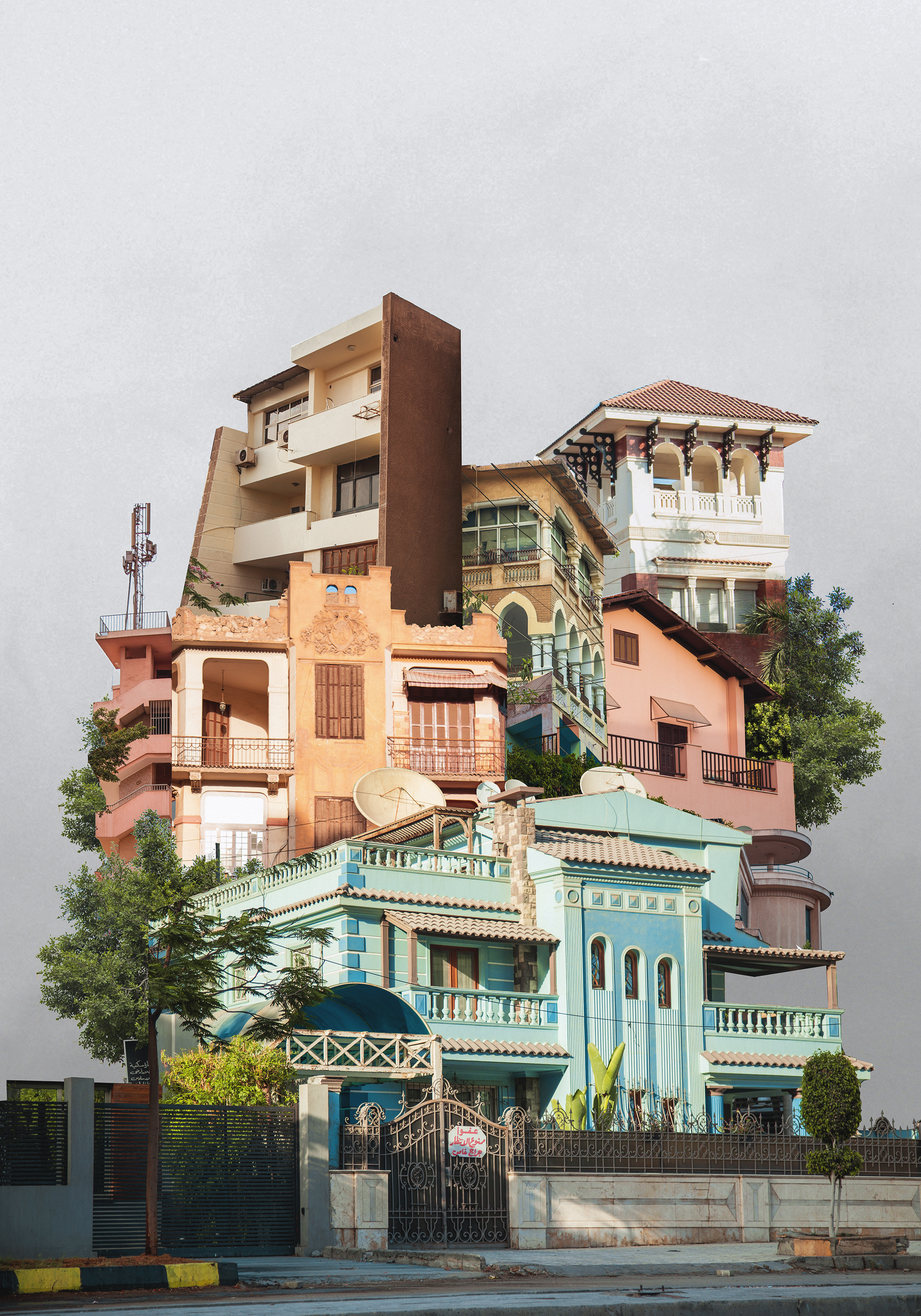 Le Carnaval was named accordingly, conveying how one neighbourhood would combine many architectural styles by bringing them together into one abstract yet familiar photograph that represented our homes, streets and cities. It comes as no surprise that El Sharkawy is also one of the driving forces behind Cairopolitan, a brand founded to celebrate Cairo’s heritage through contemporary elements.
Le Carnaval was named accordingly, conveying how one neighbourhood would combine many architectural styles by bringing them together into one abstract yet familiar photograph that represented our homes, streets and cities. It comes as no surprise that El Sharkawy is also one of the driving forces behind Cairopolitan, a brand founded to celebrate Cairo’s heritage through contemporary elements.
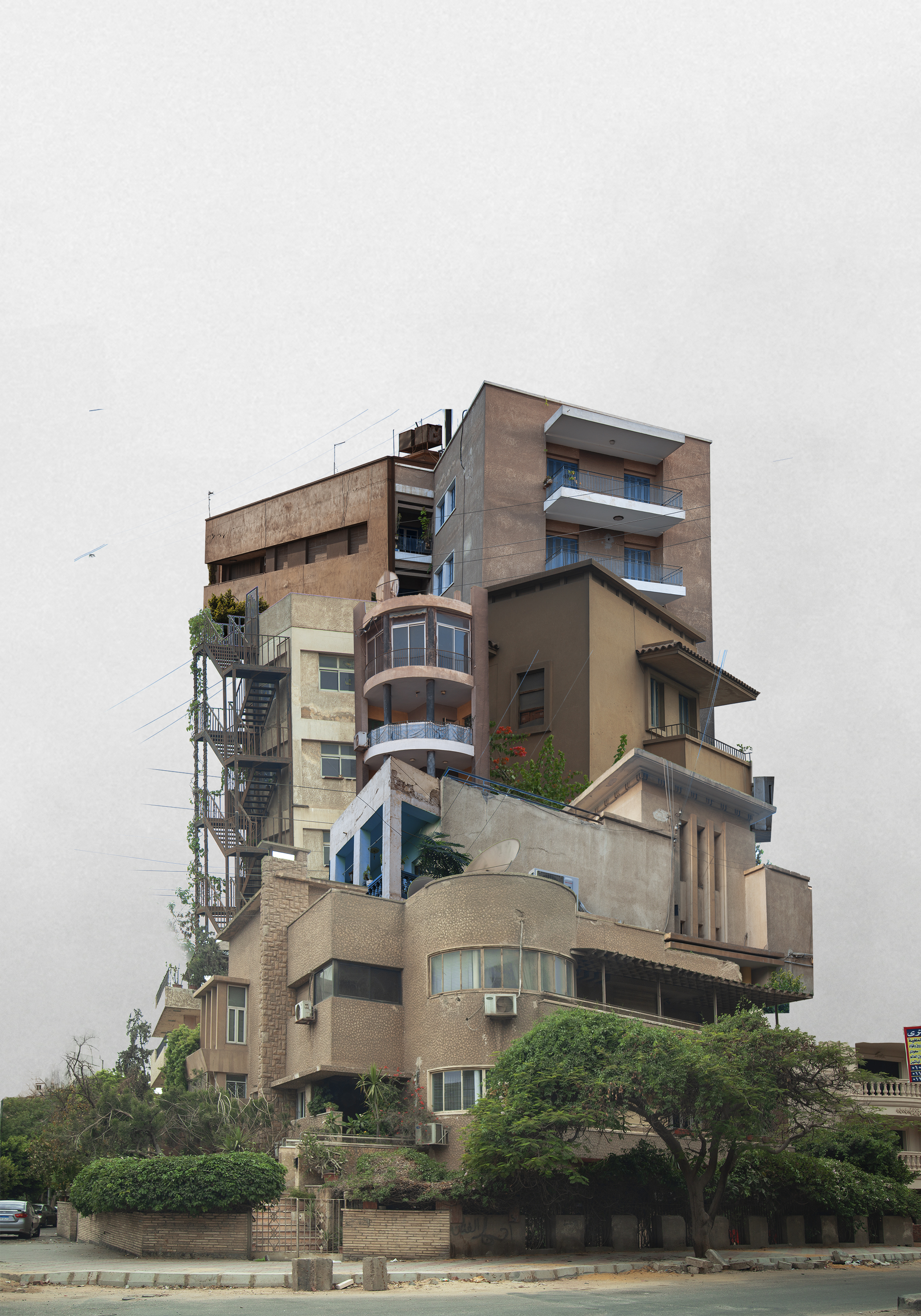 While photographing, El Sharkawy doesn’t have the final composition in mind as she tries to remain unbiased. “If I think of it while photographing I would become selective way too early.” To arrive at images that feel right, El Sharkawy’s process needs to remain unaltered. Scan the area, single out elements that can be used, and then mix and match. Like bringing a door and a window together to create a familiar visual, or a façade and a corridor to offer a unique urban perspective.
While photographing, El Sharkawy doesn’t have the final composition in mind as she tries to remain unbiased. “If I think of it while photographing I would become selective way too early.” To arrive at images that feel right, El Sharkawy’s process needs to remain unaltered. Scan the area, single out elements that can be used, and then mix and match. Like bringing a door and a window together to create a familiar visual, or a façade and a corridor to offer a unique urban perspective.
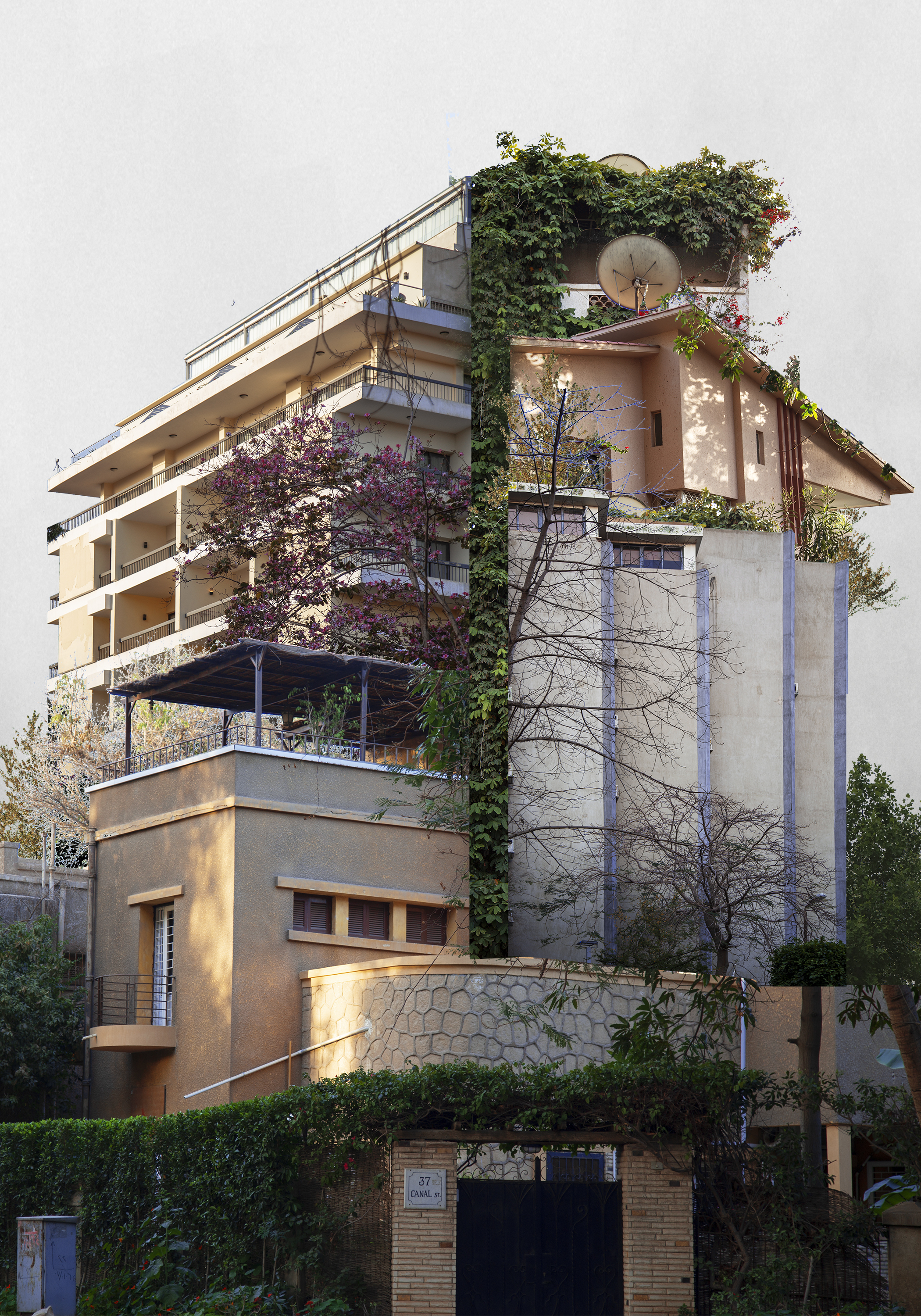 “Photographing in the streets is never easy, especially when you’re trying to capture everything,” she says. Even while driving, El Sharkawy still manages to take photographs, without looking at the camera because her eyes are on the road of course, yet her finger remains on the shutter button. “I need to make sure everything is covered because I may come back and find that a building has been demolished or a bridge is now right in front of it.”
“Photographing in the streets is never easy, especially when you’re trying to capture everything,” she says. Even while driving, El Sharkawy still manages to take photographs, without looking at the camera because her eyes are on the road of course, yet her finger remains on the shutter button. “I need to make sure everything is covered because I may come back and find that a building has been demolished or a bridge is now right in front of it.”
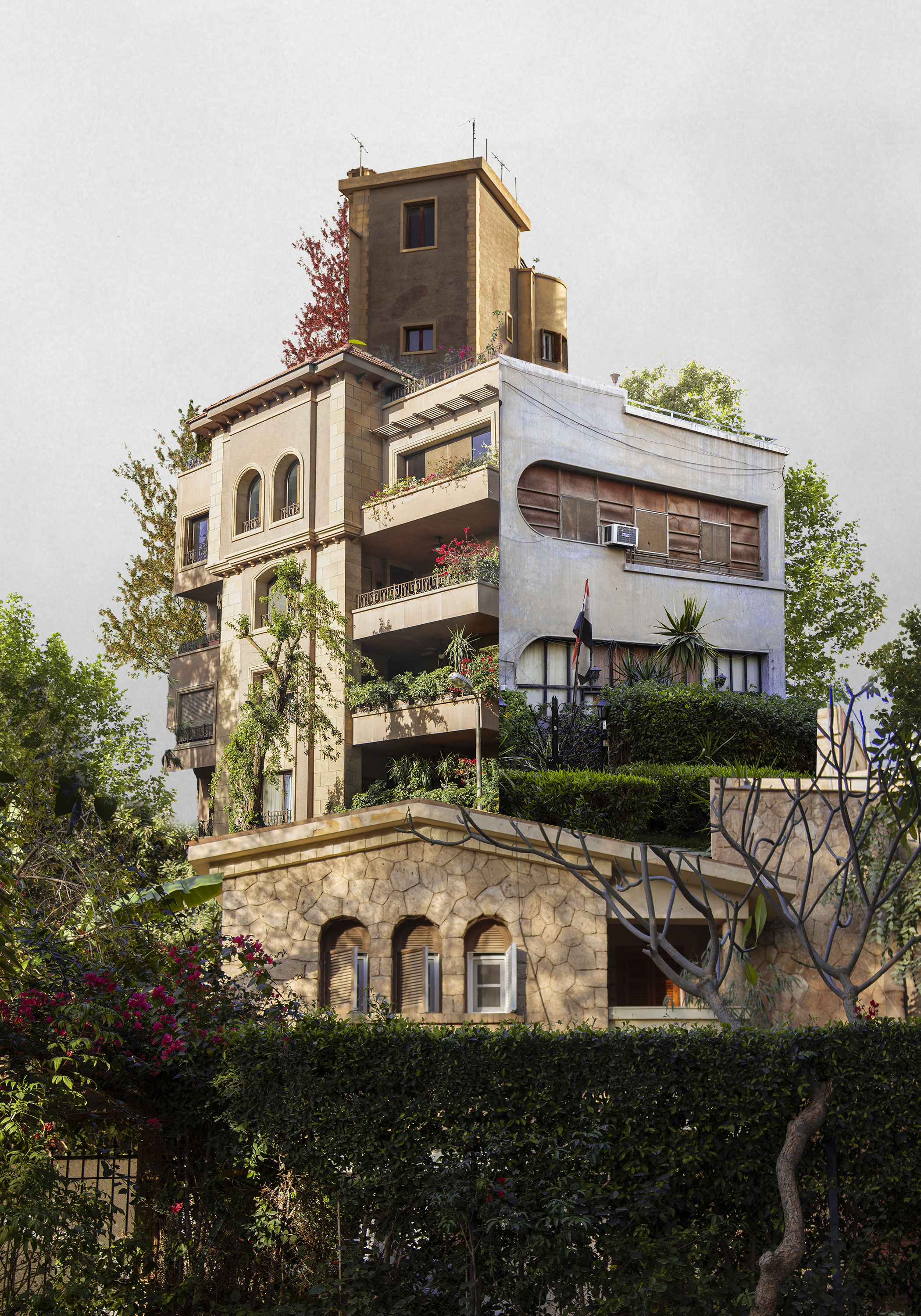 “I try to create my own reality and let my imagination take a physical form through these photographs.” Exploring things that aren’t necessarily there is a notion that takes many forms in El Sharkawy’s work. Like placing informal settlements in European landscapes, we mean, they are there, but not really. Each one of El Sharkawy’s projects is an attempt to answer a social, cultural and architectural question in her mind. Facing her beliefs and ideas by bringing them to reality to view them. Allowing, in the process, others to formulate their own answers or even raise questions of their own.
“I try to create my own reality and let my imagination take a physical form through these photographs.” Exploring things that aren’t necessarily there is a notion that takes many forms in El Sharkawy’s work. Like placing informal settlements in European landscapes, we mean, they are there, but not really. Each one of El Sharkawy’s projects is an attempt to answer a social, cultural and architectural question in her mind. Facing her beliefs and ideas by bringing them to reality to view them. Allowing, in the process, others to formulate their own answers or even raise questions of their own.
- Previous Article Contemporary Buildings Inspired by Egyptian Buildings
- Next Article Dine & Dazzle: Inspiring Dining Rooms by Egyptian Designers
Trending This Month
-
Apr 18, 2024



